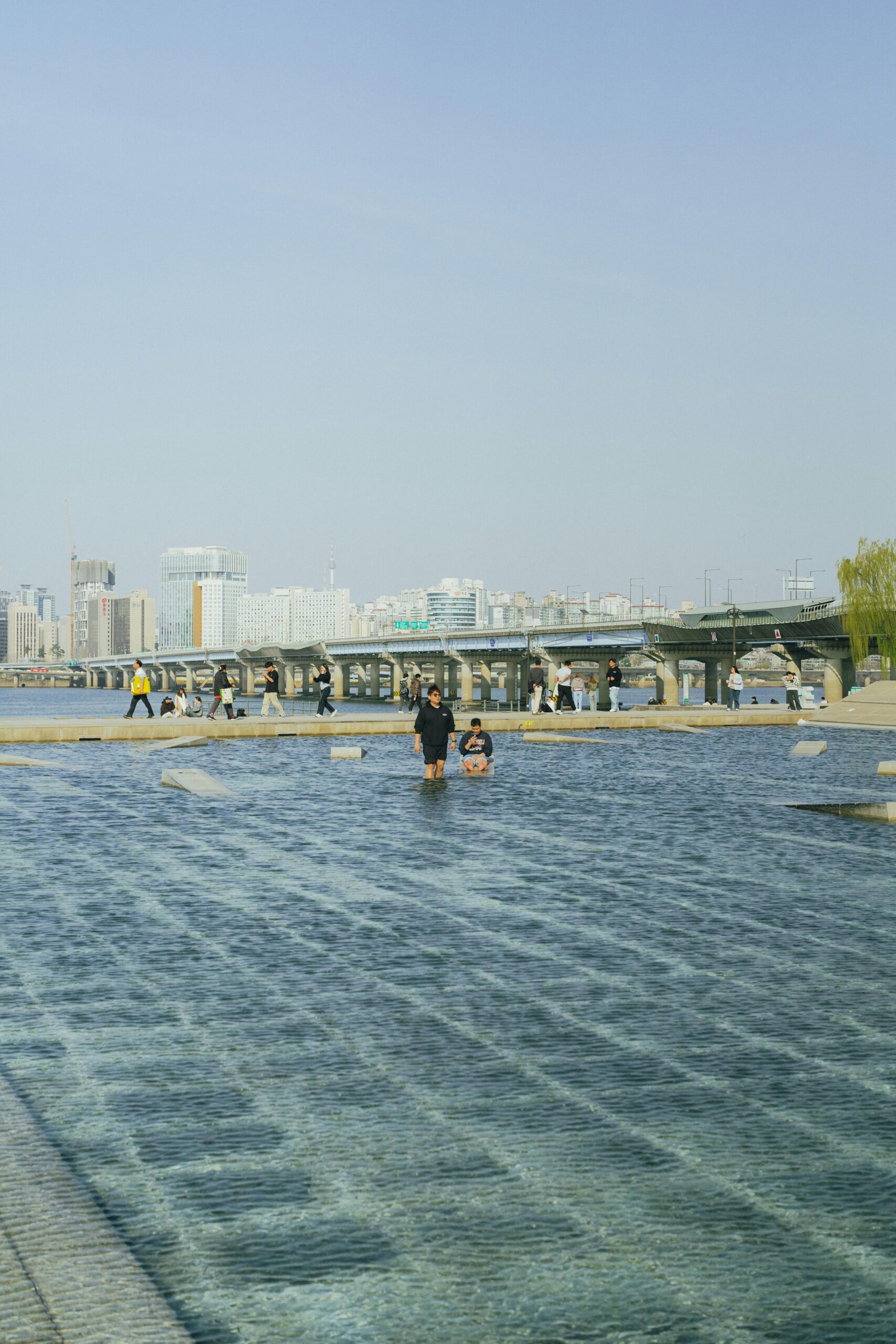Exploring the Serene Han River Parks: A Green Oasis in Seoul
The Han River, flowing through the heart of Seoul, South Korea, is not only a major waterway but also a central feature of the city’s vibrant urban life. Along its banks lies an extensive network of parks, offering both residents and visitors a refreshing escape from the bustle of city life. These Han River parks combine natural beauty, recreational opportunities, cultural activities, and modern amenities, creating spaces that nourish physical health, mental well-being, and social connections. This article will delve into the unique qualities of the Han River parks, their ecological and recreational significance, the various attractions they offer, and their role in promoting sustainable urban living. Join us as we explore why the Han River parks are a cherished asset to Seoul.
Natural Beauty and Ecological Importance
The Han River parks stretch over 12 major districts, encompassing an extensive green belt that supports diverse flora and fauna. These parks play a crucial role in urban ecology by providing habitats for migratory birds and native plants, creating biodiversity hotspots within the city. Many areas along the river have been carefully reforested and landscaped to restore natural ecosystems, blending grass fields, wooded groves, and wetlands. The green spaces act as a natural air purifier, reducing pollution, and help moderate the urban heat island effect common in metropolitan areas. This ecological vitality enhances the parks’ tranquility and offers visitors a much-needed connection to nature in a bustling city.
Recreational Activities and Facilities
Designed to accommodate a wide array of leisure pursuits, the Han River parks provide facilities for cycling, running, fishing, picnicking, and water sports such as kayaking and windsurfing. Bike trails span over 80 kilometers along the river, encouraging active lifestyles and attracting both casual riders and serious cyclists. Family-friendly playgrounds, open-air gyms, and spacious picnic areas make the parks an ideal spot for people of all ages to gather and unwind. Seasonal events like outdoor concerts, festivals, and fireworks displays add to the lively atmosphere, transforming the parks into vibrant social hubs throughout the year.
Cultural and Social Significance
Beyond recreation, the Han River parks are vital cultural spaces where art, community, and history converge. Sculptures and installation art dot the park areas, showcasing contemporary Korean creativity. Annual cultural events, including traditional music performances and international festivals, celebrate both local heritage and global diversity. The river’s historical significance—as a former transportation route and a witness to Seoul’s development—adds layers of meaning to these public spaces. Moreover, the parks serve as meeting places where people of different backgrounds come together, fostering a spirit of community and inclusion.
Sustainability and Urban Planning
The development of the Han River parks is a model of innovative urban planning emphasizing sustainability. Authorities have incorporated eco-friendly designs such as permeable pavements, solar-powered lights, and rain gardens that manage stormwater naturally. Efforts to preserve the river’s water quality include strict pollution controls and educational campaigns raising awareness about environmental stewardship. The parks demonstrate how urban green spaces can coexist with metropolitan infrastructure, providing essential ecosystem services while enhancing residents’ quality of life. This balance plays a pivotal role in Seoul’s broader strategy to become a greener, more resilient city.
Future Prospects and Continuous Enhancements
Looking ahead, the Han River parks are set to expand and evolve in response to growing public demand and environmental challenges. Plans include increasing green cover, enhancing connectivity between districts via pedestrian bridges and bike lanes, and integrating smart technology for better visitor experience and park management. Community involvement remains a priority in shaping these developments, ensuring that the parks continue to reflect the needs and aspirations of Seoul’s citizens. As climate change and urbanization accelerate, the Han River parks will remain an indispensable sanctuary fostering harmony between nature and city life.
Conclusion: The Han River Parks as a Living Testament to Urban Harmony
In summary, the Han River parks stand as vibrant, multifaceted spaces where nature, recreation, culture, and sustainability intersect seamlessly. Their ecological richness counters urban sprawl, offering essential green lungs for Seoul, while their recreational facilities promote health and social engagement. The cultural significance embedded in these parks reinforces community identity and inclusiveness, and the sustainable practices set a benchmark for future urban development. As these parks continue to grow and innovate, they embody the ideal of harmonious urban living—providing a peaceful refuge amid the city’s dynamic energy, and inspiring residents and visitors alike to cherish and protect this natural heritage.
